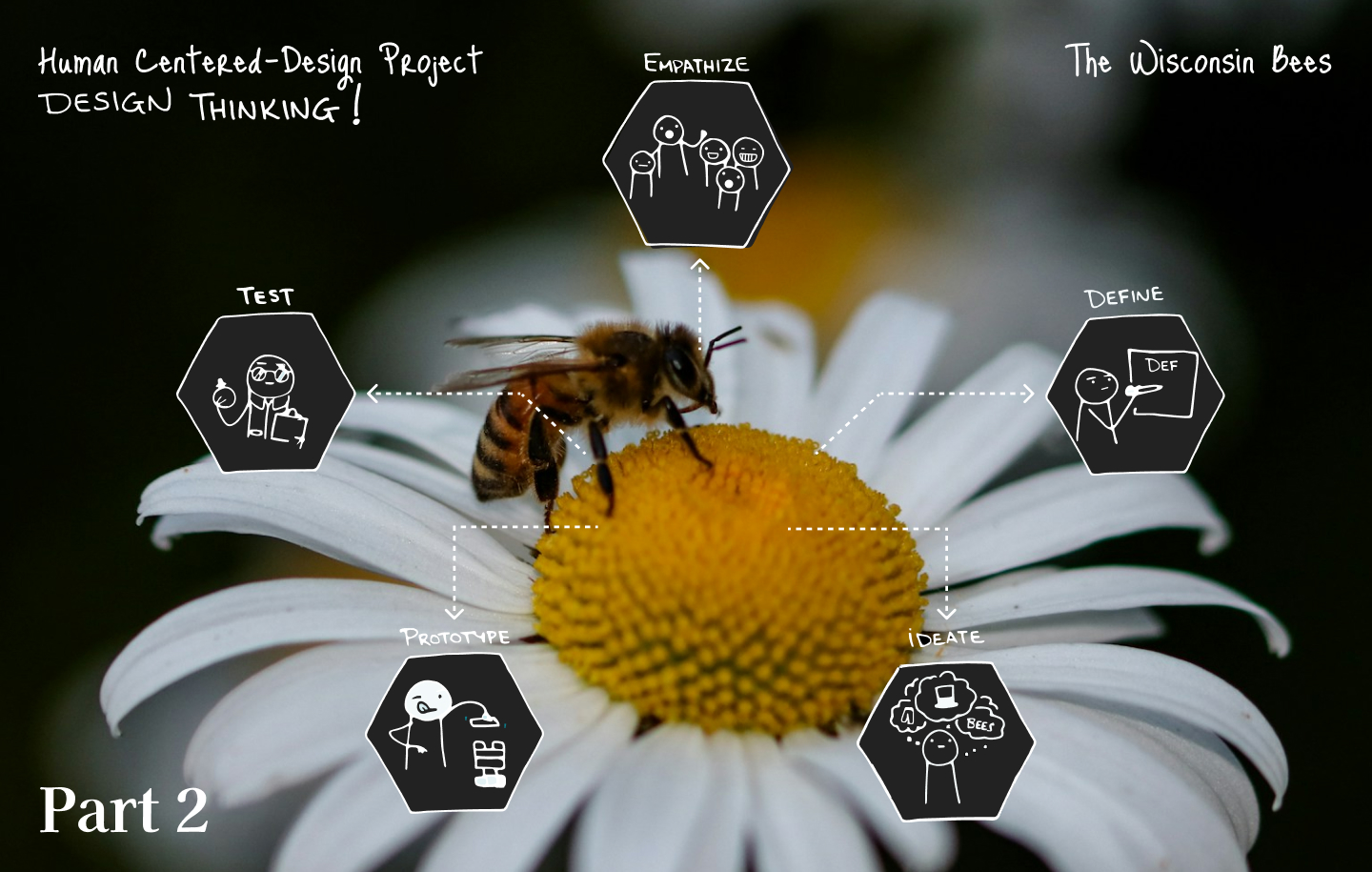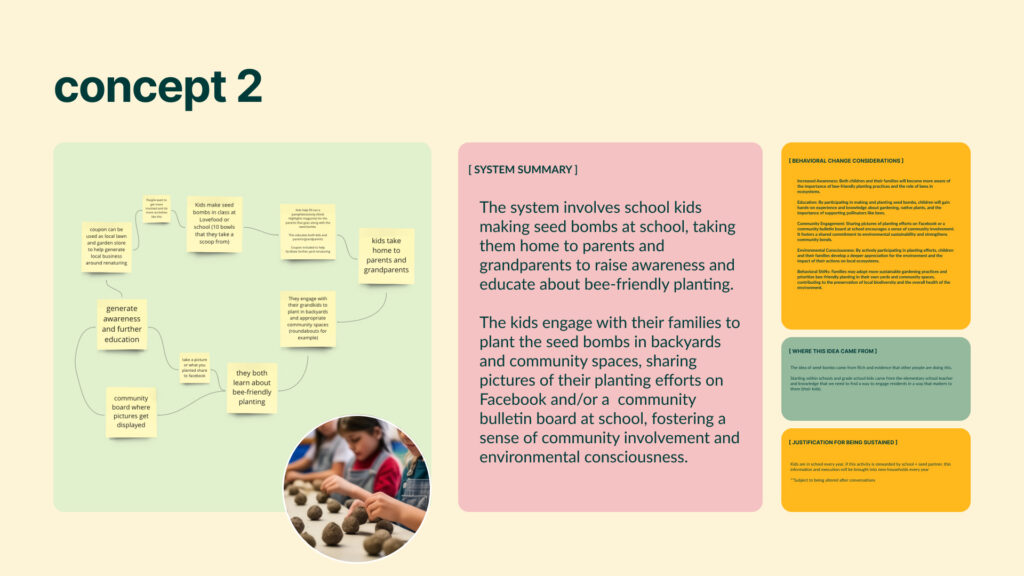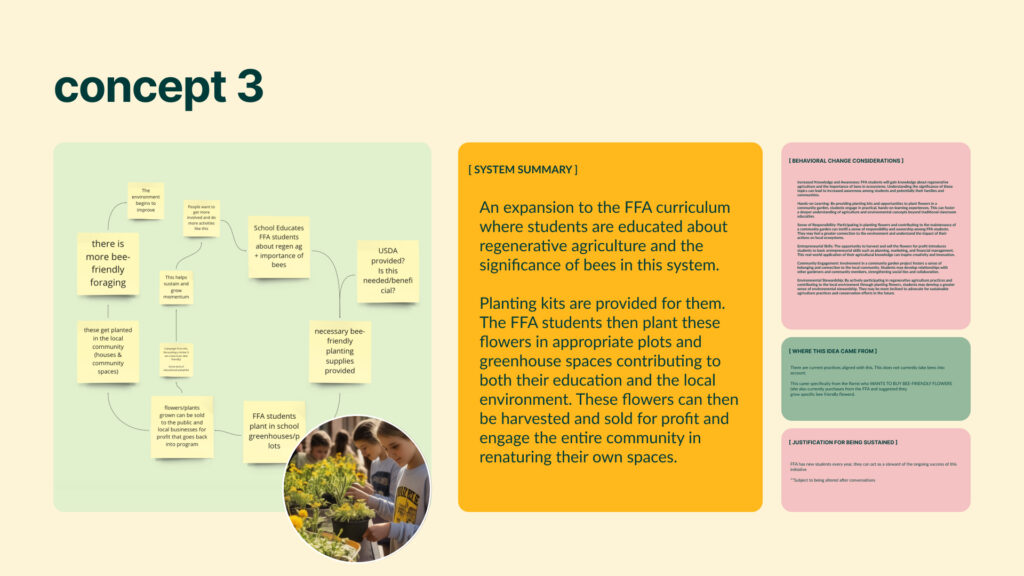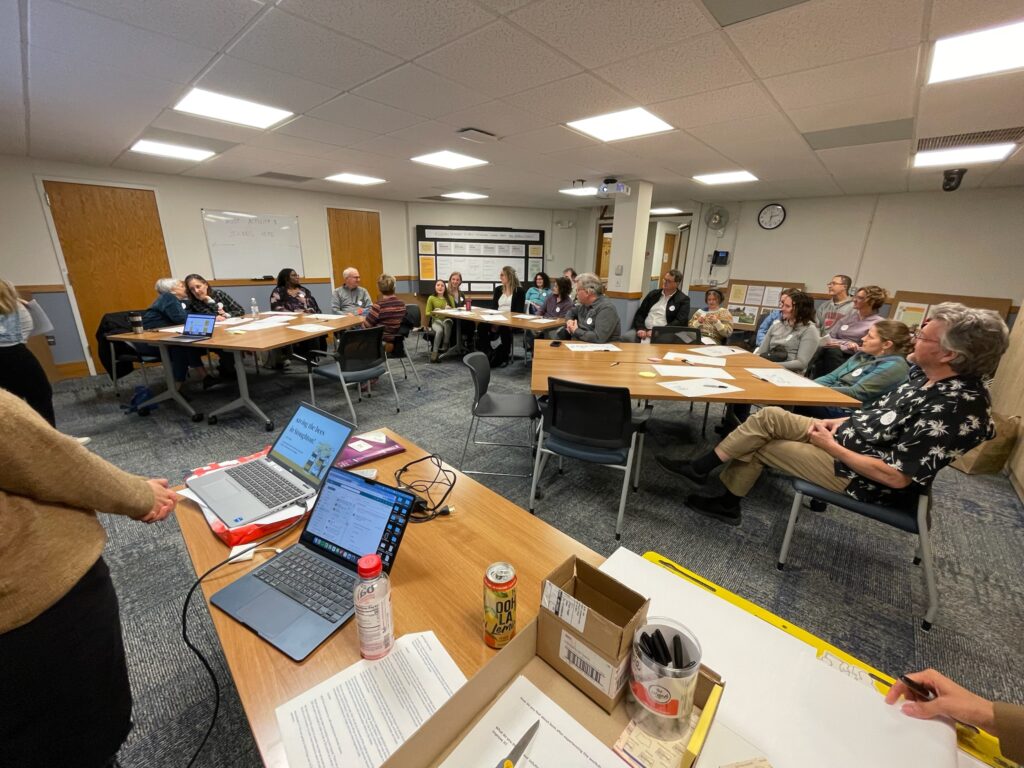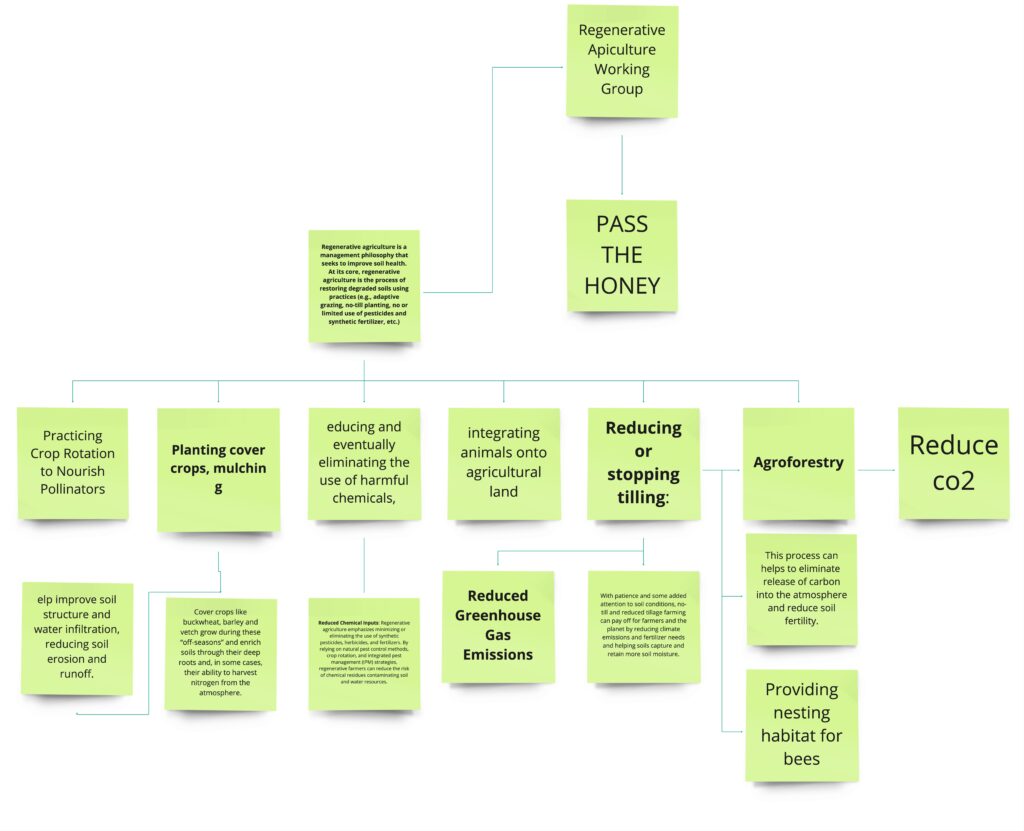Research Methods
- Human-Centered Design Principals
- Collaboration with a Town in Wisconsin
- Research
- Ideation
- Visual Design
- Prototyping
Tools Used
- Figma
- Miro
- Google Suite
- Zoom
Deliverables
- A guide book to help reverse the decline of bees
Team Size
6 people
Collaborating with Social Sector Entities to Protect Bee Habitats
In spring 2024, we regrouped with different team members and utilized research from the empathize, define, and ideate stages to transition into the prototype, test, and implement phase. We began by gathering major insights and applied the Revisit, Reframe, and Refine framework to identify key problems, reframe the problem statement, and refine it to address the correct issues. This approach also helped us identify common themes across each team member’s insights.
In my role as a UX researcher and designer, I was responsible for keeping the user at the forefront. I focused on identifying the root causes of problems and creating system maps to understand climate issues. Based on this research, I developed prototypes, created journey maps, and facilitated workshops.
solution
Our final deliverable was a strategic insight guidebook aimed at providing a social sector solution for the decline in bee populations. This guidebook is organized into three main sections:
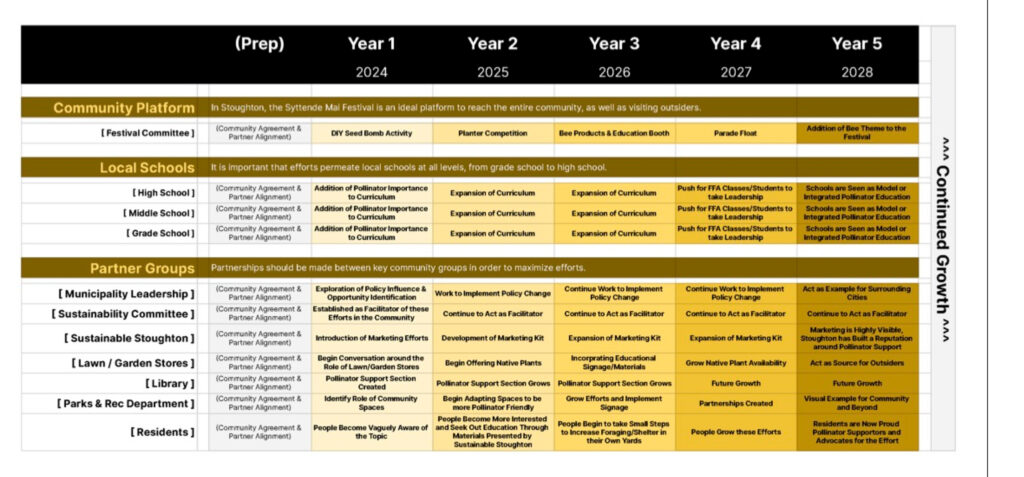
key findings
Our combined research indicates that bee populations are severely threatened by climate change and industrial agriculture, leading to habitat destruction, diminished food sources, and pesticide exposure. This decline reflects a deteriorating ecosystem that impacts everyone. By fostering healthier bee populations, we can initiate positive changes for both the environment and our communities
what?
Through partnerships between public, private, and community organizations, we aim to provide healthy bee habitats, promote environmental regeneration, and foster economic development in Stoughton, WI, and the surrounding 5-mile radius.
By collaborating with local Wisconsin communities to enhance conditions that support regenerative agricultural practices. Regenerative agriculture is believed to lead to increased regional economic development, improved soil, water, and air quality, increased biodiversity, and more resilient agricultural yields.
How might we enroll civilian constituents to increase the health of local bee populations in Smallville, WI.

